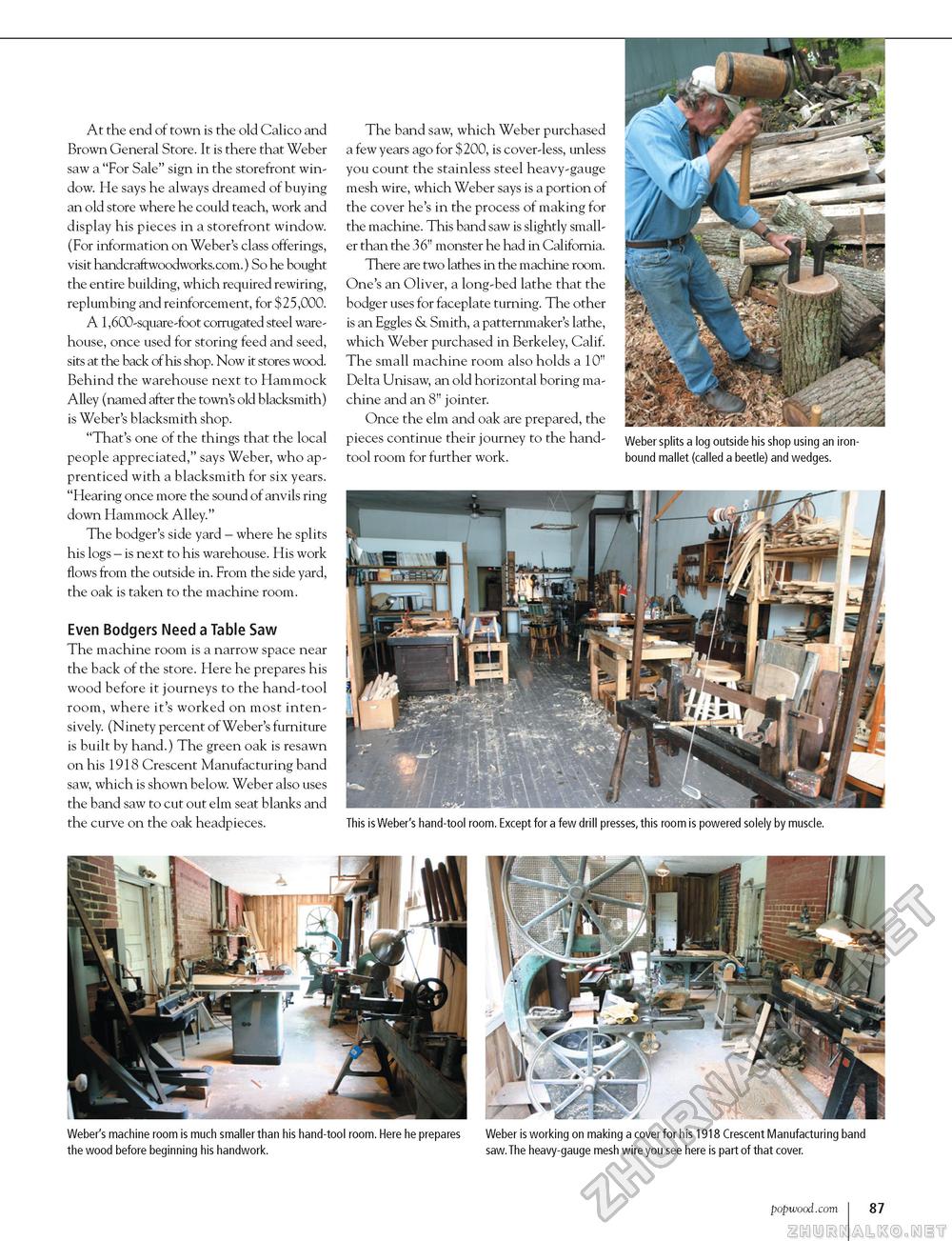Popular Woodworking 2003-10 № 136, страница 87
At the end of town is the old Calico and Brown General Store. It is there that Weber saw a "For Sale" sign in the storefront window. He says he always dreamed of buying an old store where he could teach, work and display his pieces in a storefront window. (For information on Weber's class offerings, visit handcraftwoodworks.com.) So he bought the entire building, which required rewiring, replumbing and reinforcement, for $25,000. A 1,600-square-foot corrugated steel warehouse, once used for storing feed and seed, sits at the back of his shop. Now it stores wood. Behind the warehouse next to Hammock Alley (named after the town's old blacksmith) is Weber's blacksmith shop. "That's one of the things that the local people appreciated," says Weber, who apprenticed with a blacksmith for six years. "Hearing once more the sound of anvils ring down Hammock Alley." The bodger's side yard - where he splits his logs - is next to his warehouse. His work flows from the outside in. From the side yard, the oak is taken to the machine room. Even Bodgers Need a Table Saw The machine room is a narrow space near the back of the store. Here he prepares his wood before it journeys to the hand-tool room, where it's worked on most intensively. (Ninety percent of Weber's furniture is built by hand.) The green oak is resawn on his 1918 Crescent Manufacturing band saw, which is shown below. Weber also uses the band saw to cut out elm seat blanks and the curve on the oak headpieces. The band saw, which Weber purchased a few years ago for $200, is cover-less, unless you count the stainless steel heavy-gauge mesh wire, which Weber says is a portion of the cover he's in the process of making for the machine. This band saw is slightly smaller than the 36" monster he had in California. There are two lathes in the machine room. One's an Oliver, a long-bed lathe that the bodger uses for faceplate turning. The other is an Eggles & Smith, a patternmaker's lathe, which Weber purchased in Berkeley, Calif. The small machine room also holds a 10" Delta Unisaw, an old horizontal boring machine and an 8" jointer. Once the elm and oak are prepared, the pieces continue their journey to the hand-tool room for further work. Weber splits a log outside his shop using an iron-bound mallet (called a beetle) and wedges. This is Weber's hand-tool room. Except for a few drill presses, this room is powered solely by muscle. popwood.com 87 |








